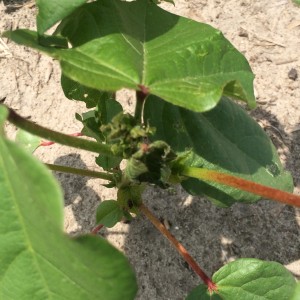Managing Plant Bugs in Cotton Presquare
go.ncsu.edu/readext?361116
en Español / em Português
El inglés es el idioma de control de esta página. En la medida en que haya algún conflicto entre la traducción al inglés y la traducción, el inglés prevalece.
Al hacer clic en el enlace de traducción se activa un servicio de traducción gratuito para convertir la página al español. Al igual que con cualquier traducción por Internet, la conversión no es sensible al contexto y puede que no traduzca el texto en su significado original. NC State Extension no garantiza la exactitud del texto traducido. Por favor, tenga en cuenta que algunas aplicaciones y/o servicios pueden no funcionar como se espera cuando se traducen.
Português
Inglês é o idioma de controle desta página. Na medida que haja algum conflito entre o texto original em Inglês e a tradução, o Inglês prevalece.
Ao clicar no link de tradução, um serviço gratuito de tradução será ativado para converter a página para o Português. Como em qualquer tradução pela internet, a conversão não é sensivel ao contexto e pode não ocorrer a tradução para o significado orginal. O serviço de Extensão da Carolina do Norte (NC State Extension) não garante a exatidão do texto traduzido. Por favor, observe que algumas funções ou serviços podem não funcionar como esperado após a tradução.
English
English is the controlling language of this page. To the extent there is any conflict between the English text and the translation, English controls.
Clicking on the translation link activates a free translation service to convert the page to Spanish. As with any Internet translation, the conversion is not context-sensitive and may not translate the text to its original meaning. NC State Extension does not guarantee the accuracy of the translated text. Please note that some applications and/or services may not function as expected when translated.
Collapse ▲As pointed out by Dr. Keith Edmisten, plant bugs (Lygus) can sometimes (very rarely) injure cotton presquare. We are seeing this right now in northeastern North Carolina on 6-7 leaf cotton. This symptom is termed “black flag” due to the death of the expanding terminal leaves. The danger is creating “crazy cotton, which is loss of apical dominance, causing multiple terminals per plant, delayed squaring, or yield loss. Terminals can be destroyed from only 20 minutes of feeding. Cool weather can double the amount of crazy cotton, so warm temperatures will help us out. Given good conditions, the cotton can recover later in the season without yield loss (Coy et al. 2001).
The plant bugs (Lygus) we are seeing right now are from a generation that developed on weeds and is moving through the system. Reports are coming in about high numbers in wheat and corn, but we are not sure what is causing these influxes into cotton before squaring. We are also finding only adults, which are very tough to manage since you can spray, kill everything in the field, and have them move in right behind the spray.
Management on presquare cotton
- Sweep cotton fields and count adults. Realize that bugs will be heavier in field edges, so move around. A sample of 25 sweeps per location (one set of 25 “swooshes”) should be adequate.
- Where you sweep, look for black flag, wilted leaves, or injured terminals (photo). If you see this injury, and have plant bugs present, spray if the number of injured terminals is greater than 1 plant in 10 feet of row. My recommendation is to use a neonicotinoid at the highest labeled rate at this point in the season. They tend to be less effective as the season goes on, but should do the trick, while preserving some beneficials. Examples include Admire Pro, Belay and Centric.
- Monitor the situation after the spray. A visit and sweeping 24 hours following the spray should give you a good idea of knockdown. Since you’ve swept and know the plant bug numbers prespray, another good visit would be 4-5 days later. See if plant bugs have migrated in again and if the terminal damage is holding steady or increasing.
- One you hit squaring, you need to use a threshold that incorporates plant bug numbers with square retention measurements. You can find scouting recommendations and the threshold for squaring cotton here.



